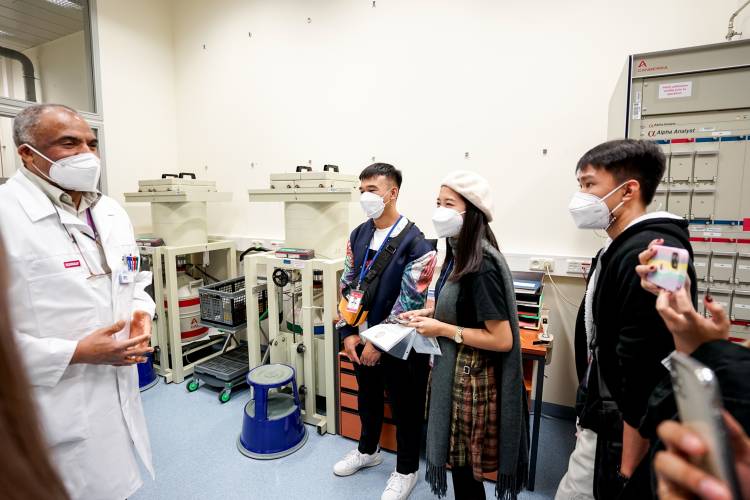Sustainable development needs the energy, skills and drive of young people, and the focus of this year's International Youth Day, observed annually on 12 August, is building and promoting greater intergenerational solidarity. The IAEA supports this effort and is working to foster greater interest in nuclear science and technology in young people through a new series of student and teacher competitions in Asia and the Pacific - winners will participate in a 2023 study tour of the IAEA's laboratories and facilities in Austria.
"The world envisioned by the Global Sustainable Development Agenda is one which today's youth will inherit, so their engagement with global development challenges, and their familiarity with science-backed solutions, will be the key to success," said Jane Gerardo-Abaya, Director of the IAEA's Technical Cooperation Division for Asia and the Pacific. "The IAEA's nuclear science and technology (NST) student competitions help us to pass the baton onto the next generation, by sparking interest early and highlighting the potential of science to change the world."
Launched on 2 August, the 2022-2023 student competition is open to three categories of participants. Secondary school students are asked to develop 3-minute-long video presentations describing the potential of nuclear technology to address the challenge of global plastic pollution, while their older peers in universities or other tertiary academic institutions are invited to share proposals to enhance the reach, impact and sustainability of IAEA activities through partnerships and through the IAEA's key programmes, including NUTEC Plastics, Rays of Hope and ZODIAC. Finally, the video submissions of participating teachers will focus on new and creative methods they have devised to introduce students without scientific backgrounds to nuclear science and technology and related topics.
Interested students and teachers have until 21 October to submit their proposals via the official website and, following review by IAEA experts, the selected finalists will present their projects at the 2023 Virtual NST Education Exhibition during a live Q&A session. The session is scheduled to kick-off on International Day of Education, 24 January, and conclude on the International Day of Women and Girls in Science, 10 February. The competition winners will be invited to visit the IAEA's headquarters in Vienna to participate in a week-long study tour.
The IAEA's nuclear science and technology (NST) student competitions help us to pass the baton onto the next generation, by sparking interest early and highlighting the potential of science to change the world.
Increasing youth engagement

The student winners of the 2021 competition were selected based on a video contest in which they demonstrated how nuclear science and technology can help meet the United Nation's Sustainable Development Goals. The winning teachers were chosen from video submissions discussing innovative science teaching methods. (Photo: IAEA)
Over the years the IAEA has been looking to strengthen its engagement with Asian youth. In 2018, the IAEA launched a regional technical cooperation project[1] that aimed to supply secondary school teachers in 26 Asian and Pacific countries with the curricula and tools needed to introduce nuclear and isotopic science to at least 1,000,000 young pupils between the ages of 12 and 18.
In 2021, the IAEA organized student competitions to encourage high school students to think creatively about the role played by nuclear science and technology in meeting the Sustainable Development Goals. After receiving more than 200 video submissions from students at 37 schools and institutions, the IAEA organized a virtual nuclear science and technology education exhibition - attended by over 20,000 visitors from 100 countries - to showcase the contributions of the winning student teams, as well as participating teachers. As the project reached more students, its objective grew more ambitious: the target audience was expanded beyond secondary school students to include students in tertiary education.
[1] RAS0079, 'Educating Secondary Students and Science Teachers on Nuclear Science and Technology'






